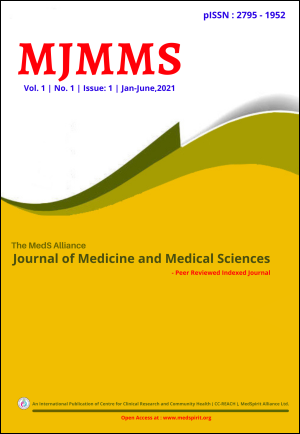Assessment of Dietary Patterns of Pregnant Women in Southern Nepal
DOI:
https://doi.org/10.3126/mjmms.v1i1.42948Keywords:
Diet, juice, meat, nutrition, pregnancyAbstract
INTRODUCTION: Quality and balanced diet becomes very crucial to the health of woman during and after pregnancy. Therefore, the study was focused on the nutritional behaviour and dietary pattern of women during pregnancy.
MATERIALS AND METHODS: Cluster random sampling was adopted. Total 336 pregnant women were selected, out of which 224 were pregnant women (cases) and 112 were non-pregnant healthy women (controls). Maternal demographics information was collected by a structured questionnaire. Data was entered into MS Excel and analyzed using SPSS version 20. Chi-square test was used. The p-value (p< 0.05) was considered statistically significant.
RESULTS: Among pregnant women, 27.23%, 32.58%, 30.95% and 9.82% women consumed meat daily, twice per week, once per week and none respectively while among non-pregnant women the consumption of meat was 25.89%, 50.89%, 17.85% and 5.35% respectively. The association of consuming meat twice per week and fish among pregnant and non-pregnant women was noted statistically significant (p=0.005). More number of study participants drank tea and milk daily. The co-relation between pregnant and non-pregnant women regarding drinking (tea and milk) daily was statistically insignificant (p=0.881 and p=0.122) respectively. However, the relation between pregnant and non-pregnant women for intake of juice was statistically significant (p=0.007).
CONCLUSIONS: Thus, the findings of this research suggest the need for a balanced nutritional diet among Nepalese pregnant women for proper foetal growth, good health of pregnant women and to avoid complications during pregnancy. Nutrition education programs in the community should be launched.
Downloads
Downloads
Published
How to Cite
Issue
Section
License
Copyright (c) 2021 Satyam Prakash, Dipendra Raj Pandeya, Khushbu Yadav, Basant Kumar Yadav

This work is licensed under a Creative Commons Attribution-NonCommercial 4.0 International License.




